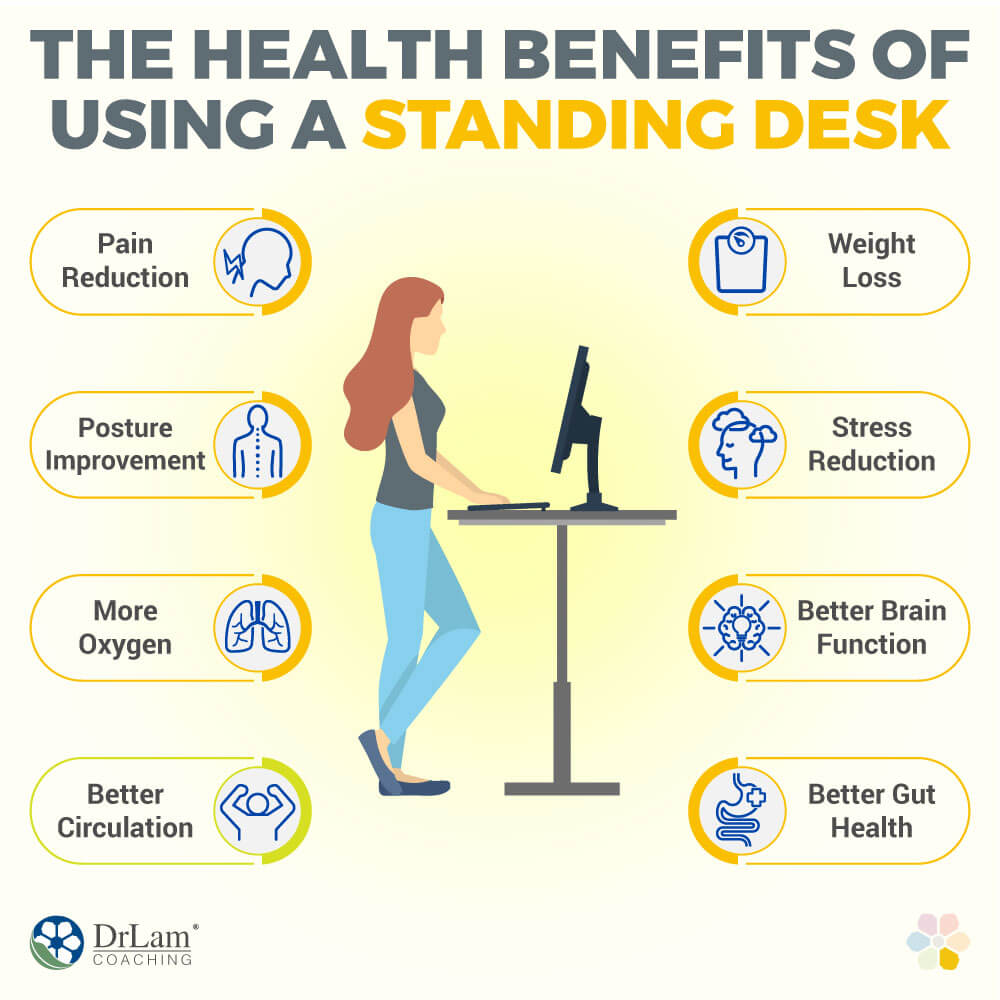Physical Address
304 North Cardinal St.
Dorchester Center, MA 02124
Physical Address
304 North Cardinal St.
Dorchester Center, MA 02124

Unlock the key to configuring your standing desk for unparalleled comfort and maximum efficiency with our comprehensive expert guide. Learn how to choose the right desk, maintain good posture, and more.

Are you considering joining the growing number of people who have made the switch to a standing desk? As more and more research highlights the potential health risks of prolonged sitting, it’s no surprise that standing desks have surged in popularity in recent years.
But simply owning a standing desk isn’t enough – proper setup is key to reaping the full benefits and avoiding discomfort or strain. In this comprehensive guide, we’ll walk you through everything you need to know to set up your standing desk for optimal comfort and efficiency.
The first step to setting up a comfortable and efficient workspace is selecting the right standing desk. With so many options on the market, it’s important to consider the following factors:
To help narrow down your options, here are a few of our top standing desk recommendations:
| Desk | Adjustability | Size | Features | Price |
|---|---|---|---|---|
| Jarvis Bamboo Standing Desk | Electric, 25.5″ – 51″ range | 48″ x 30″, 60″ x 30″, 72″ x 30″ | Memory presets, cable management tray | $$$$ |
| Uplift V2 Standing Desk | Electric, 25.5″ – 51.1″ range | 42″ x 30″ up to 80″ x 30″ | Memory keypad, 48 accessory mounting points | $$$$ |
| Flexispot EC1 Standing Desk | Electric, 28″ – 47.6″ range | 48″ x 30″, 55″ x 28″ | Basic up/down keypad, no-frills design | $$$ |
| Vari Electric Standing Desk | Electric, 25″ – 50.5″ range | 48″ x 30″, 60″ x 30″ | LED memory keypad, sturdy T-style legs | $$$ |
Prices: $ = under $200, $$ = $200-$500, $$$ = $500-$1000, $$$$ = over $1000
Once you have your standing desk, it’s time to focus on setting it up with proper ergonomics in mind. Maintaining good posture is crucial to minimizing strain and discomfort when using a standing desk.
Follow these steps to ensure an ergonomic setup:
Here’s a visual guide to help you achieve the ideal ergonomic setup:

While a standing desk offers numerous benefits, it’s not advisable to stand all day long. The key is to alternate between sitting and standing throughout the day to keep your body moving and prevent fatigue.
Here’s a sample schedule you can follow:
Of course, you can adjust this schedule based on your personal preferences and work requirements. The goal is to stand for at least 30-60 minutes per hour, gradually increasing your standing time as you build endurance.
Incorporating regular stretches and exercises into your workday can help alleviate muscle tension and promote better posture. Here are a few simple moves you can do right at your standing desk:
Remember to listen to your body and stop any exercises that cause pain or discomfort. Aim to take a brief stretching break at least once per hour to keep your muscles loose and limber.
Even with the best intentions, many standing desk users fall into common pitfalls that can lead to discomfort or even injury. Watch out for these issues:
By being mindful of these common mistakes and taking steps to correct them, you can ensure a more comfortable and productive experience with your standing desk.
Setting up your standing desk properly is essential to enjoying the many benefits it can offer – from reduced sedentary time to improved posture and increased energy levels. By selecting the right desk, optimizing your ergonomic setup, alternating between sitting and standing, and incorporating regular stretches and exercises, you’ll be well on your way to a healthier and more efficient workday.
Remember, the transition to a standing desk takes time and patience. Start slowly, listen to your body, and make adjustments as needed. With a little practice and persistence, you’ll soon find your ideal balance and rhythm.
So, are you ready to take your workspace to the next level? Implement these tips and enjoy the perks of a properly set-up standing desk – your body (and productivity) will thank you!
The ideal height for your standing desk is where your elbows are at a 90-degree angle when your hands are on the keyboard, ensuring a comfortable typing position and reducing strain on your wrists and arms.
You should aim to alternate between sitting and standing every 30 to 60 minutes to balance comfort and energy without affecting productivity. This ratio helps to minimize the risks associated with prolonged sitting or standing.
Stand with your feet shoulder-width apart, knees slightly bent, and maintain a neutral spine alignment. Your monitor should be at eye level and about an arm’s length away to prevent neck and eye strain.
Yes, standing desks can improve productivity by boosting blood flow and energy levels. They also encourage movement, which can lead to increased brain activity and better focus.
Consider using accessories like anti-fatigue mats, adjustable monitor stands, or keyboard trays to enhance comfort. These can help maintain proper posture and reduce fatigue during long periods of standing.